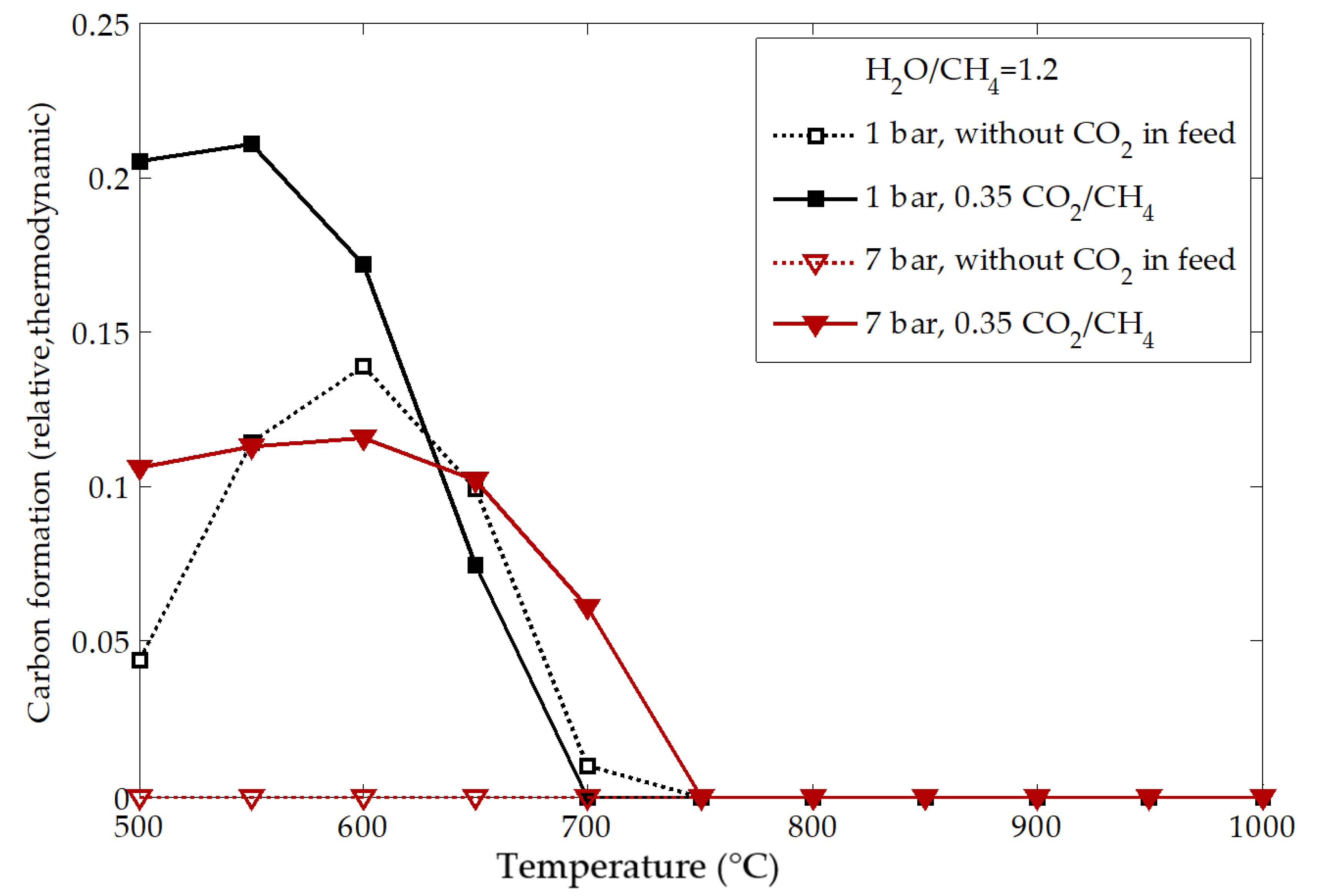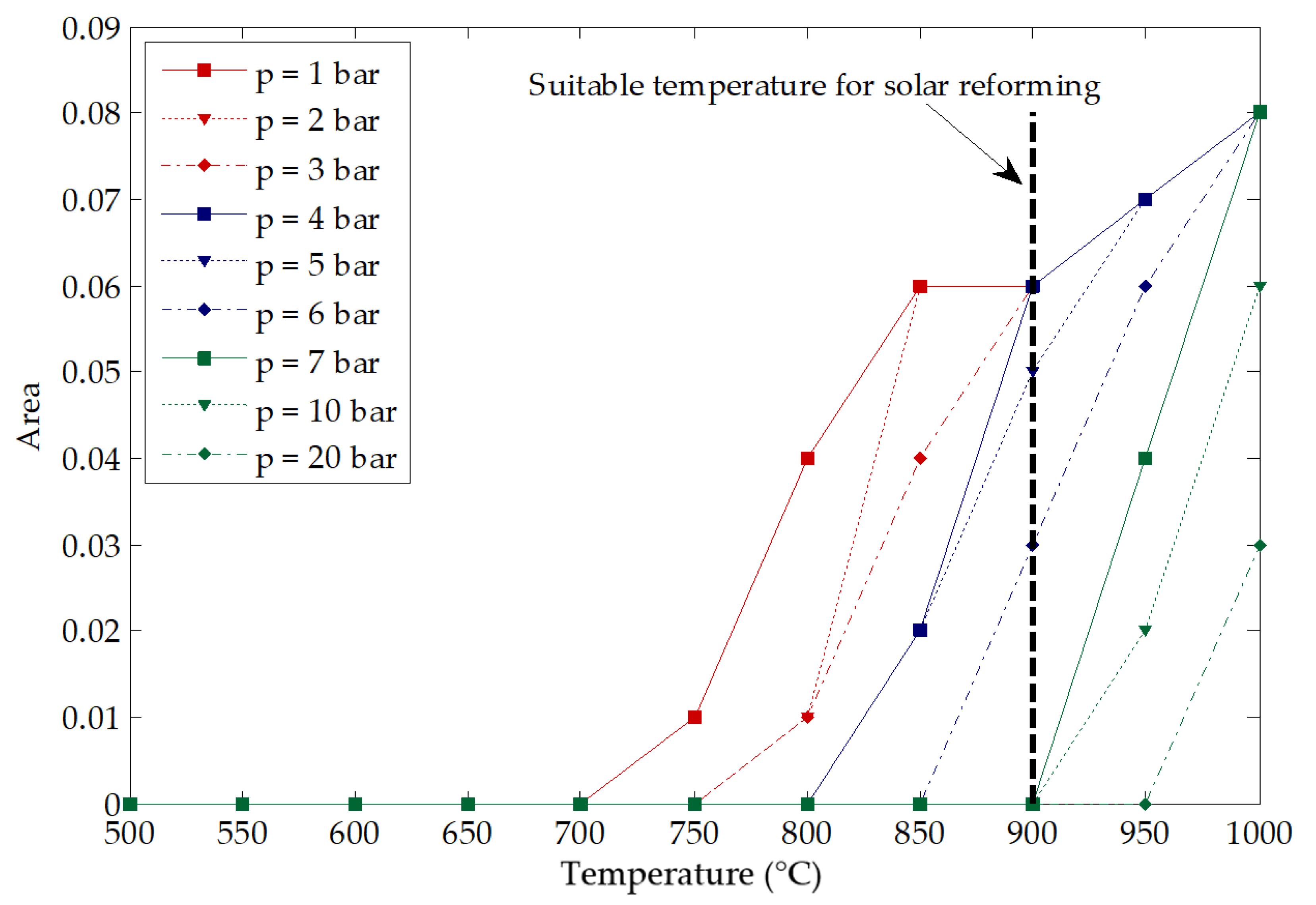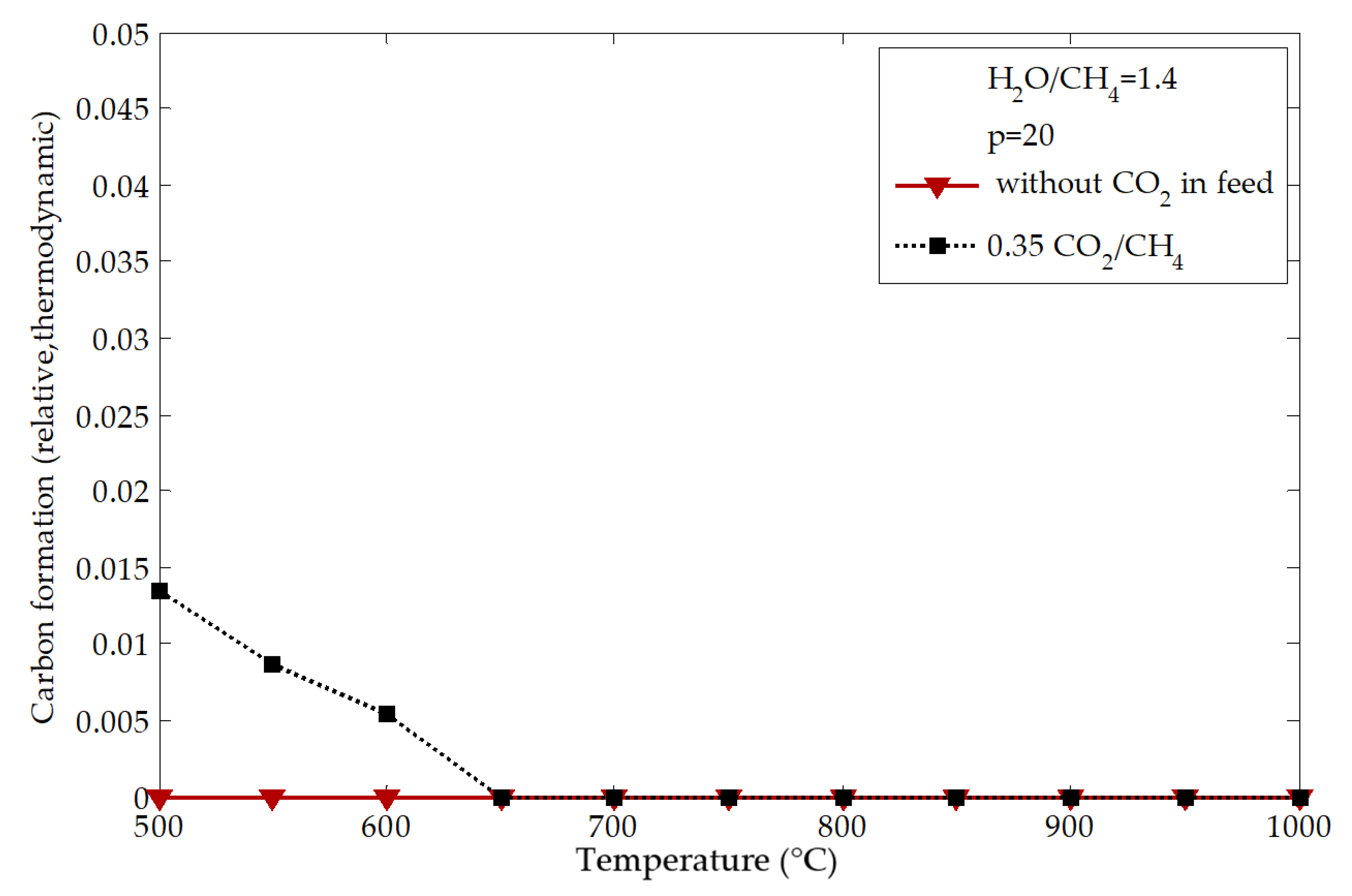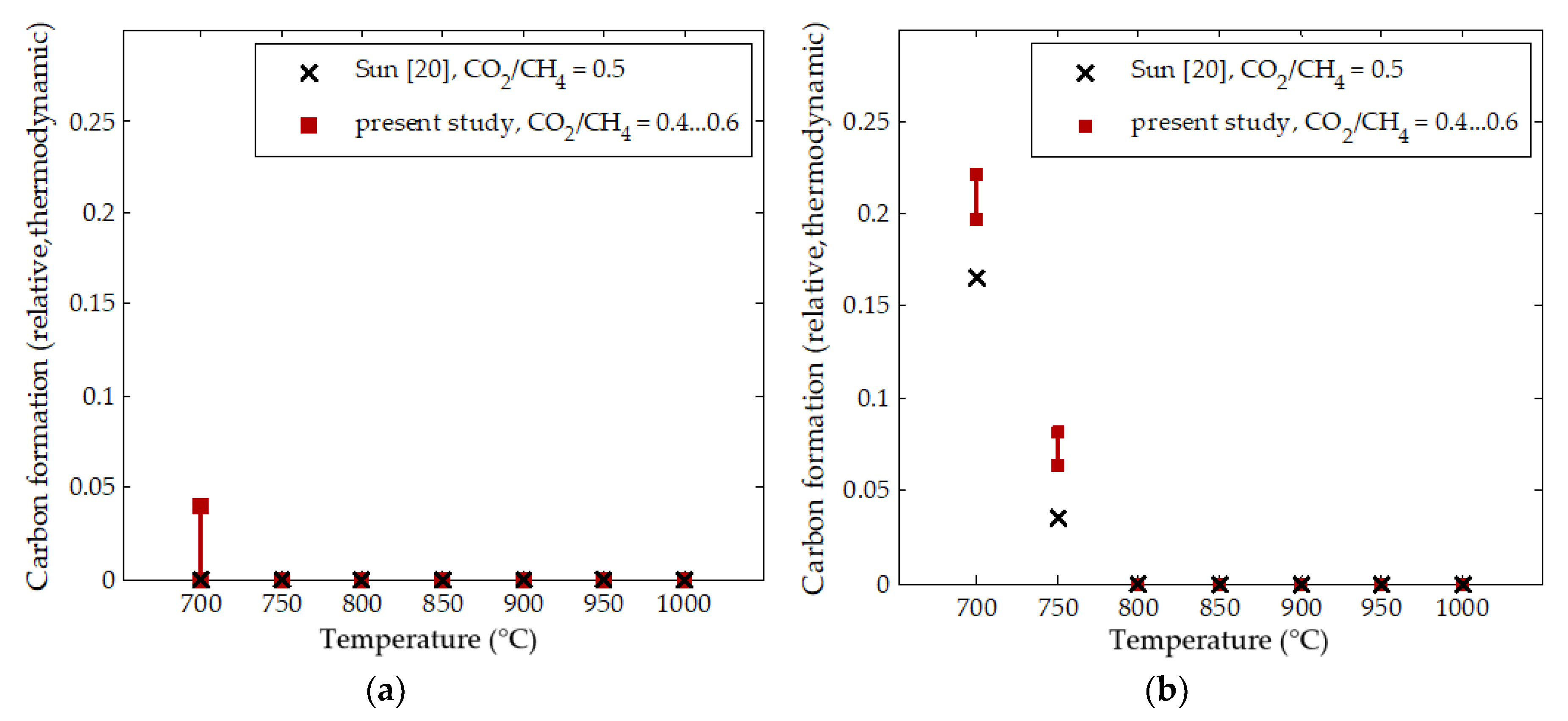Methane cracking—Equation (3) is endothermic, i.e., promoted by high temperatures and according to the reaction equation by high CH
4 concentration and low H
2 concentration. It can therefore be well controlled, as there is commonly low CH
4 and high H
2 concentration in the hot parts of the reformer. The Boudouard reaction—Equation (4) is exothermic, hence promoted by low temperatures, high CO concentration and low CO
2 concentration. It may therefore lead to carbon formation in the cold parts of the reactor if the feed-gas does not contain CO
2. The CO-reduction—Equation (5) is exothermic, hence promoted by low temperatures and high CO and H
2 concentration and low steam concentration in the reformer. According to Bartholomew and Farrauto [
2], the CO-reduction is negligible in reforming reactors. In
Table 1, the promoting conditions regarding temperature, pressure and gas composition are listed for the three carbon formation mechanisms. Regarding the gas composition, the “low” column implies that the respective route is promoted by low concentration or absence of the named species. The same is listed for species that promote carbon if present in high concentrations.
Another relevant aspect in the assessment of reforming processes, disregarding if it is a steam, dry or mixed reforming process is the product composition. The dry reforming reaction reduces the ratio of hydrogen to carbon monoxide in the product. Hence, utilizing CO
2 in a process for production of pure hydrogen is obstructive. Other typical applications of reforming reactions are the generation of syngas for the methanol or Fischer-Tropsch synthesis [
2,
11]. Besides outlet temperature, operating pressure of the reforming reactor and approach to equilibrium, the inlet gas composition influences the outlet syngas composition. Therefore, the potential of dry- or mixed reforming can only be assessed when taking into account the requirements of the subsequent syngas processing. This is also done by Blumberg, et al. [
12], who come to the conclusion that neither dry- nor steam reforming yields the optimal composition for methanol synthesis, but only a combination of the two, i.e., mixed reforming. Li, et al. [
13] assessed the conversion of Methane, Steam and CO
2 and potential carbon formation in a mixed reforming process. However, no conclusions were drawn considering a specific purpose for the product syngas. Zhang, et al. [
14] investigated the utilization of CO
2 in a methanol production process and assess feeding the CO
2 into the reforming reactor or directly into the methanol reactor. However, they did not consider in detail the impact of heat supply to the reforming reactor. Hence no conclusion can be drawn regarding the actual reduction in CO
2 emissions. Atashi, et al. [
15] carried out an intensive statistical analysis on the conversion, yield and product composition in a dry reforming reaction and propose a value they call “desirability” of the product. They came to the conclusion that a molar ratio of CO
2 to CH
4 of 0.5 at the inlet to the reactor is optimal. It is unclear, how the “desirability” is defined by Atashi, et al. [
15] and a sub-stoichiometric input of CO
2, which they propose, leads to incomplete conversion of CH
4, causing a drastic loss of the valuable feedstock CH
4. Therefore, the transferability of their results into practice is questionable. Furthermore, Chein, et al. [
16] contradict Atashi, et al. [
15] by stating that to their finding a high CO
2 excess enhances the performance of a dry reforming reactor. Choudhary and Mondal [
17] investigated mixed reforming of methane over perovskite-type catalysts regarding conversion, selectivity and carbon formation. They showed the carbon free operation of the process and stated that the product composition can be controlled by variation of process conditions such as temperature. However, they do not put the results into context with subsequent syngas utilization. Bradford and Vannice [
18] intensively studied dry reforming of methane and state that dry reforming is only suitable when H
2/CO ratios of 1 or lower are desired. Furthermore, they state that H
2/CO ratios of 1 to 3 can be achieved by adjusting the H
2O/CO
2/CH
4 ratio in the reformer. Jang, et al. [
19] carried out a thermodynamic equilibrium analysis similar to the one presented here as well as experimental results on mixed reforming of methane. They assessed the conversion of CH
4 and CO
2, as proposed in this work. They find a minimum ratio of (H
2O + CO
2)/CH
4 that is required to avoid carbon formation, which is valuable information for the assessment of this process. Their work is similar to the one presented in this article, however they complement each other, as this work puts the results into the context of the actual syngas utilization which is crucial for the overall process balance. In the context of solar heated reforming, Sun, et al. [
20] assessed the risk of carbon formation and outlet composition of syngas for a mixed reforming process for varying conditions in support of their development of a solar heated reforming reactor. They assess the H
2 yield, CH
4 conversion and carbon formation as well as H
2/CO ratio. However, they do not assess conversion of CO
2, which should be a basic requirement to such a process. Furthermore, besides H
2/CO ratio, CO
2 content in the product gas should be assessed, as CO
2 conversion is never complete and CO
2 sequestration from the product expensive. Therefore, it is most reasonable to assess the composition of a product syngas through a module which takes into account H
2, CO and CO
2. This is common for methanol synthesis and high temperature Fischer-Tropsch synthesis, because both processes can convert CO
2. Rostrup-Nielsen, et al. [
21] propose the Module
M, which is defined according to Equation (6), where
zi is the molar ratio of species
i. For methanol synthesis, DME production and high temperature Fischer-Tropsch synthesis
M should assume a value close to 2 [
1,
12]:










